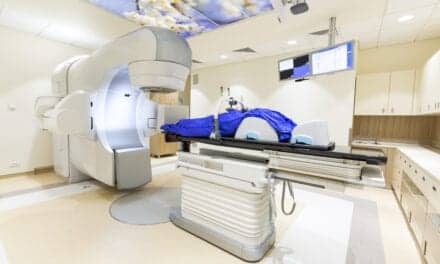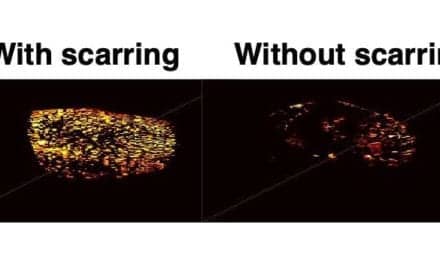A novel PET imaging technique can noninvasively detect active inflammation in the body before clinical symptoms arise, according to research published in the February issue of The Journal of Nuclear Medicine. Using a PET tracer that binds to proteins present on activated immune cells, the technique produces images of ongoing inflammation throughout the body, such as rheumatoid arthritis. This makes it easier for physicians to correctly diagnose and treat patients.
Rheumatoid arthritis is the most common type of inflammatory arthritis and affects 18 million people worldwide. It is a complex autoimmune disease characterized by chronic inflammation. This inflammation can cause the destruction of cartilage and bone, eventually leading to limitations, disabilities, loss of function, decreased quality of life, and possibly shortened life expectancy.
“A major interest of the rheumatology field is employing precision diagnostics to predict disease development in individuals with risk factors of rheumatoid arthritis,” says Fredrik Wermeling, PhD, associate professor and group leader at the Department of Medicine, Division of Rheumatology, Center for Molecular Medicine (CMM) at the Karolinska Institutet, in Solna, Sweden. “The hope is to find ways to identify such individuals even before they get sick, with the goal of being able to treat them so they never develop the disease.”
CD69 is one of the earliest cell surface markers seen on cells experiencing inflammation and is present in the tissue of patients with active rheumatoid arthritis. As such, researchers evaluated the performance of the CD69-targeting PET agent, 68Ga-DOTA-ZCAM241, for early disease detection in a mouse model of inflammatory arthritis.
In the study, mice were imaged with 68Ga-DOTA-ZCAM241 PET before and three, seven, and 12 days after induction of arthritis. Disease progression was monitored by clinical parameters, such as measuring body weight and scoring swelling in the paws. The uptake of 68Ga-DOTA-ZCAM241 in the paws was analyzed, and after the last PET scan, tissue biopsy samples analyzed for CD69 expression. A second group of mice received PET scans with a nonspecific control peptide.
Increased uptake of the CD69-directed tracer 68Ga-DOTA-ZCAM241 was seen in the paws of mice with induced inflammatory arthritis three days after induction, which preceded the appearance of clinical symptoms five to seven days after induction. The uptake of 68Ga-DOTA-ZCAM241 also correlated with the clinical score and disease severity. The nonspecific control peptide demonstrated only low binding.
“68Ga-DOTA-ZCAM241 is a potential candidate for PET imaging of activated immune cells during rheumatoid arthritis onset,” says Olof Eriksson, PhD, associate professor and group leader of Translational PET Imaging at the Department of Medicinal Chemistry at Uppsala University in Sweden. “We know that physicians are asking for better methods to image inflammation, for example in rheumatoid arthritis, and we hope this technology will be broadly used in many diseases that involve activated immune cells and inflammation.”
Featured image: (A) PET images of [68Ga]Ga-DOTA-ZCAM241 uptake at baseline and 3, 7, and 12 days after injection as inflammatory arthritis developed in single representative individual mouse. Images are normalized to SUV of 0.5 for direct comparison between time points. (B) CD69 immunofluorescence Sytox (Thermo Fisher Scientific) staining of joints of representative animals during matching time points.






